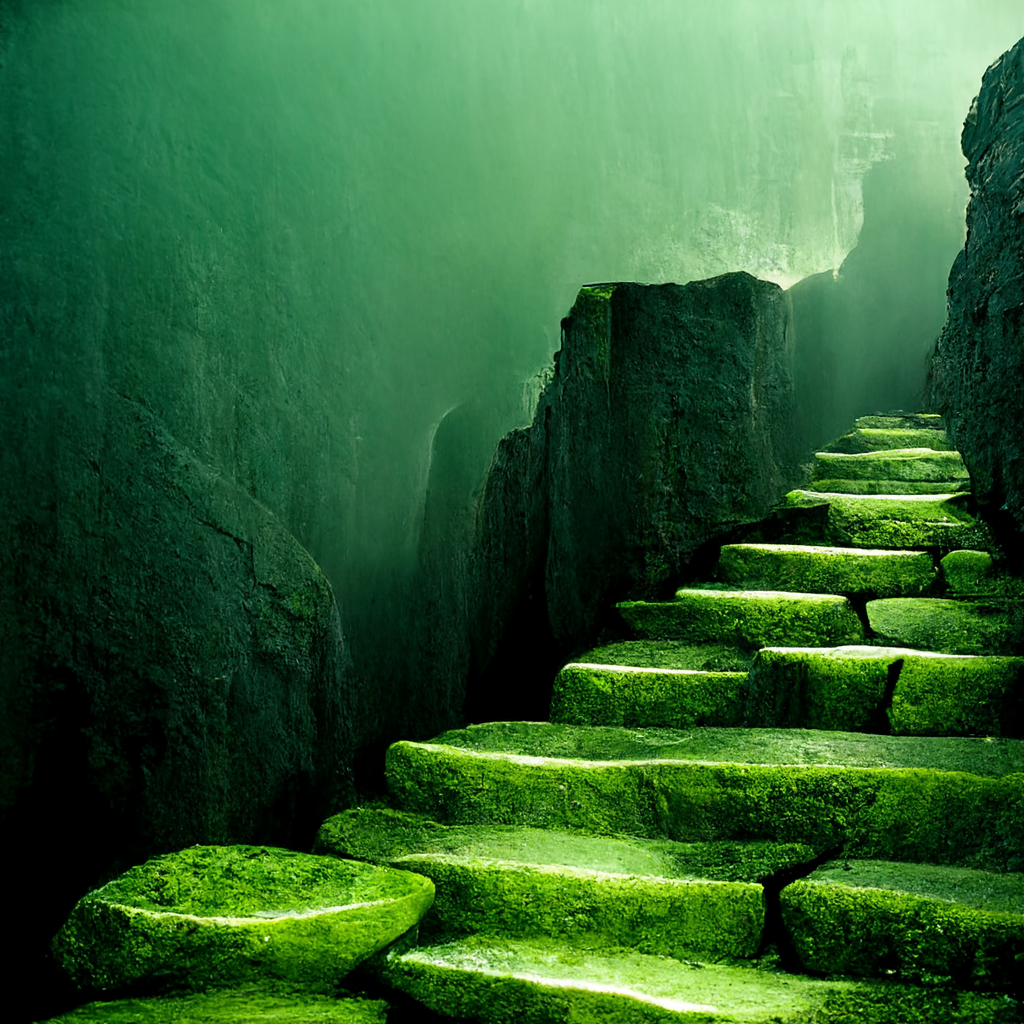THE PEOPLE OF THE PIT (4)
By:
August 21, 2022

HiLoBooks is pleased to serialize A. Merritt’s 1918 proto-sf story “The People of the Pit” for HILOBROW’s readers. Merritt’s yarn — an early example of “weird” fiction, which appeared in All-Story Weekly — destabilizes Enlightenment assumptions about the knowability of the universe, suggesting there are worlds here on Earth that lie beyond our understanding.
ALL INSTALLMENTS: 1 | 2 | 3 | 4 | 5 | 6 | 7 | 8 | 9.
“I could see down perhaps a thousand feet. Then a thick blue haze shut out the eye. It was like the blue you see gather on the high hills at dusk. And the pit — it was awesome; awesome as the Maori Gulf of Ranalak, that sinks between the living and the dead and that only the freshly released soul has strength to leap — but never strength to cross again.
“I crept back from the verge and stood up, weak. My hand rested against one of the pillars of the gateway. There was carving upon it. It bore in still sharp outlines the heroic figure of a man. His back was turned. His arms were outstretched. There was an odd peaked headdress upon him. I looked at the opposite pillar. It bore a figure exactly similar. The pillars were triangular and the carvings were on the side away from the pit. The figures seemed to be holding something back. I looked closer. Behind the outstretched hands I seemed to see other shapes.
“I traced them out vaguely. Suddenly I felt unaccountably sick. There had come to me an impression of enormous upright slugs. Their swollen bodies were faintly cut — all except the heads which were well marked globes. They were — unutterably loathsome. I turned from the gates back to the void. I stretched myself upon the slab and looked over the edge.
“A stairway led down into the pit!”
“A stairway!” we cried.
“A stairway,” repeated the crawling man as patiently as before. “It seemed not so much carved out of the rock as built into it. The slabs were about six feet long and three feet wide. It ran down from the platform and vanished into the blue haze.”
“But who could build such a stairway as that?” I said. “A stairway built into the wall of a precipice and leading down into a bottomless pit!”
“Not bottomless,” said the crawling man quietly. “There was a bottom. I reached it!”
“Reached it?” we repeated.
“Yes, by the stairway,” answered the crawling man. “You see — I went down it!
“Yes,” he said. “I went down the stairway. But not that day. I made my camp back of the gates. At dawn I filled my knapsack with food, my two canteens with water from a spring that wells up there by the gateway, walked between the carved monoliths and stepped over the edge of the pit.
“The steps ran along the side of the rock at a forty-degree pitch. As I went down and down I studied them. They were of a greenish rock quite different from the granitic porphyry that formed the wall of the precipice. At first I thought that the builders had taken advantage of an outcropping stratum, and had carved from it their gigantic flight. But the regularity of the angle at which it fell made me doubtful of this theory.
“After I had gone perhaps half a mile I stepped out upon a landing. From this landing the stairs made a V shaped turn and ran on downward, clinging to the cliff at the same angle as the first flight; it was a zig-zag, and after I had made three of these turns I knew that the steps dropped straight down in a succession of such angles. No strata could be so regular as that. No, the stairway was built by hands! But whose? The answer is in those ruins around the edge, I think — never to be read.
“By noon I had lost sight of the five peaks and the lip of the abyss. Above me, below me, was nothing but the blue haze. Beside me, too, was nothingness, for the further breast of rock had long since vanished. I felt no dizziness, and any trace of fear was swallowed in a vast curiosity. What was I to discover? Some ancient and wonderful civilization that had ruled when the Poles were tropical gardens? Nothing living, I felt sure — all was too old for life. Still, a stairway so wonderful must lead to something quite as wonderful, I knew. What was it? I went on.
RADIUM AGE PROTO-SF: “Radium Age” is Josh Glenn’s name for the nascent sf genre’s c. 1900–1935 era, a period which saw the discovery of radioactivity, i.e., the revelation that matter itself is constantly in movement — a fitting metaphor for the first decades of the 20th century, during which old scientific, religious, political, and social certainties were shattered. More info here.
SERIALIZED BY HILOBOOKS: James Parker’s Cocky the Fox | Annalee Newitz’s “The Great Oxygen Race” | Matthew Battles’s “Imago” | & many more original and reissued novels and stories.
